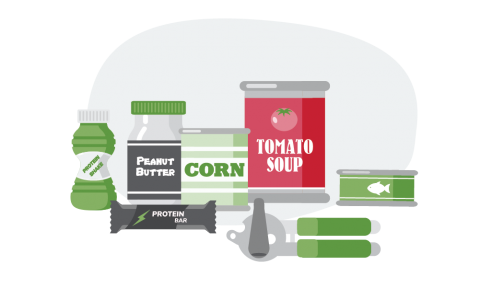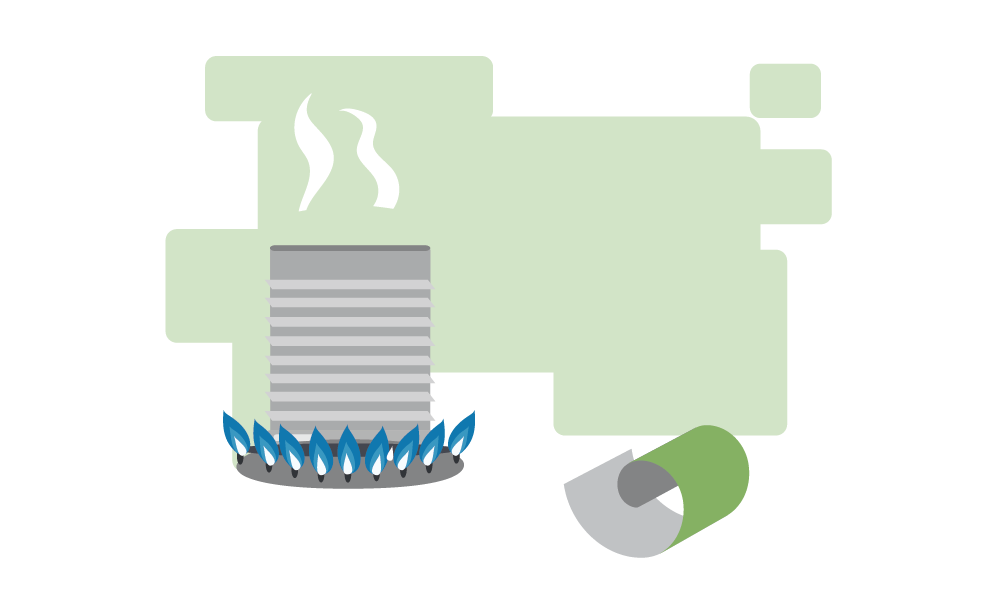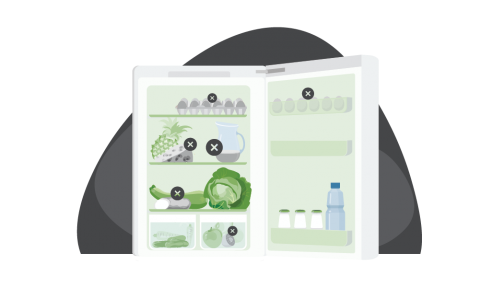Suggested Food Supplies
Food Safety and Sanitation
Cooking
Managing Food without Power
Following a disaster there may be power outages that could last for several days. Stock canned foods, dry mixes and other staples that do not require refrigeration, cooking, water or special preparation. Be sure to include a manual can opener and eating utensils.
Suggested Emergency Food Supplies
Consider the following things when putting together your emergency food supplies:
- Store at least a several-day supply of non-perishable food.
- Choose foods your family will eat.
- Remember any special dietary needs.
We suggest the following items when selecting emergency food supplies. You may already have many of these on hand. Download the Recommended Supplies List (PDF).

- Ready-to-eat canned meats, fruits, vegetables and a can opener
- Protein or fruit bars
- Dry cereal or granola
- Peanut butter
- Dried fruit
- Canned juices
- Non-perishable pasteurized milk
- High-energy foods
- Food for infants
- Comfort/stress foods
Food Safety and Sanitation
Without electricity or a cold source food stored in refrigerators and freezers can become unsafe. Bacteria in food grow rapidly at temperatures between 40 and 140 degrees Fahrenheit and if these foods are consumed you can become very sick. Thawed food usually can be eaten if it is still “refrigerator cold.” It can be re-frozen if it still contains ice crystals. Remember “When in doubt, throw it out.”
Do:
- Keep food in covered containers.
- Keep cooking and eating utensils clean.
- Throw away any food that has come into contact with contaminated flood water.
- Throw away any food that has been at room temperature for two hours or more.
- Throw away any food that has an unusual odor, color or texture.
- Use ready-to-feed formula. If you must mix infant formula use bottled water or boiled water as a last resort.
Don’t:
- Eat foods from cans that are swollen, dented or corroded, even though the product may look safe to eat.
- Eat any food that looks or smells abnormal, even if the can looks normal.
- Let garbage accumulate inside, both for fire and sanitation reasons.
Cooking
Alternative cooking sources can be used in times of emergency including candle warmers, chafing dishes, fondue pots or a fireplace. Charcoal grills and camp stoves are for outdoor use only. Commercially canned food may be eaten out of the can without warming.
To heat food in a can:

- Remove the label.
- Thoroughly wash and disinfect the can. (Use a diluted solution of one part bleach to 10 parts water.)
- Open the can before heating.
Managing Food without Power

- Keep the refrigerator and freezer doors closed as much as possible.
- The refrigerator will keep food cold for about four hours if it is unopened.
- Refrigerated or frozen foods should be kept at 40 degrees Fahrenheit or below for proper food storage.
- Use a refrigerator thermometer to check temperature.
- Refrigerated food should be safe as long as the power was out for no more than four hours.
- Discard any perishable food such as meat, poultry, fish, eggs or leftovers that have been above 40 degrees Fahrenheit for two hours or more.
Using Dry Ice:
- Know where you can get dry ice prior to a power outage.
- Twenty-five pounds of dry ice will keep a 10 cubic foot freezer below freezing for three to four days.
- If you use dry ice to keep your food cold, make sure it does not come in direct contact with the food.
- Use care when handling dry ice. Wear dry, heavy gloves to avoid injury.
For more information about food safety during an emergency visit FoodSafety.gov.


